The 20 most beautiful fishes in the world
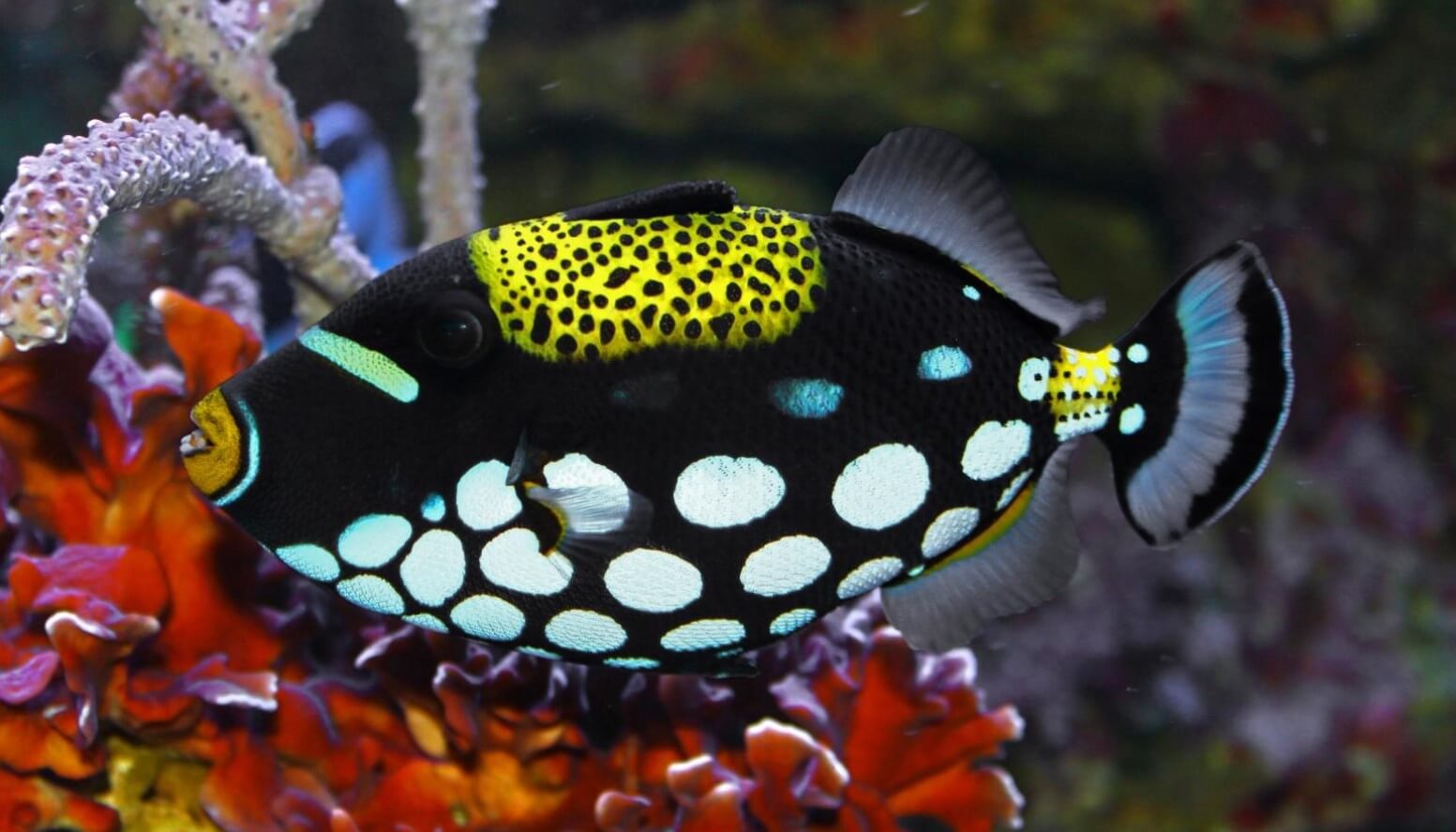
The beauty of fishes, of course, is a subjective concept, but the magnificence of the underwater world can be admired endlessly. The picturesqueness of some representatives of its ichthyofauna is simply amazing. In total there are about 25 thousand fish in the world, but only some of their representatives have a truly enchanting appearance.
Sprintally represents the 20 most beautiful fishes in the world.
1. Butterflyfish (Chaetodontidae)
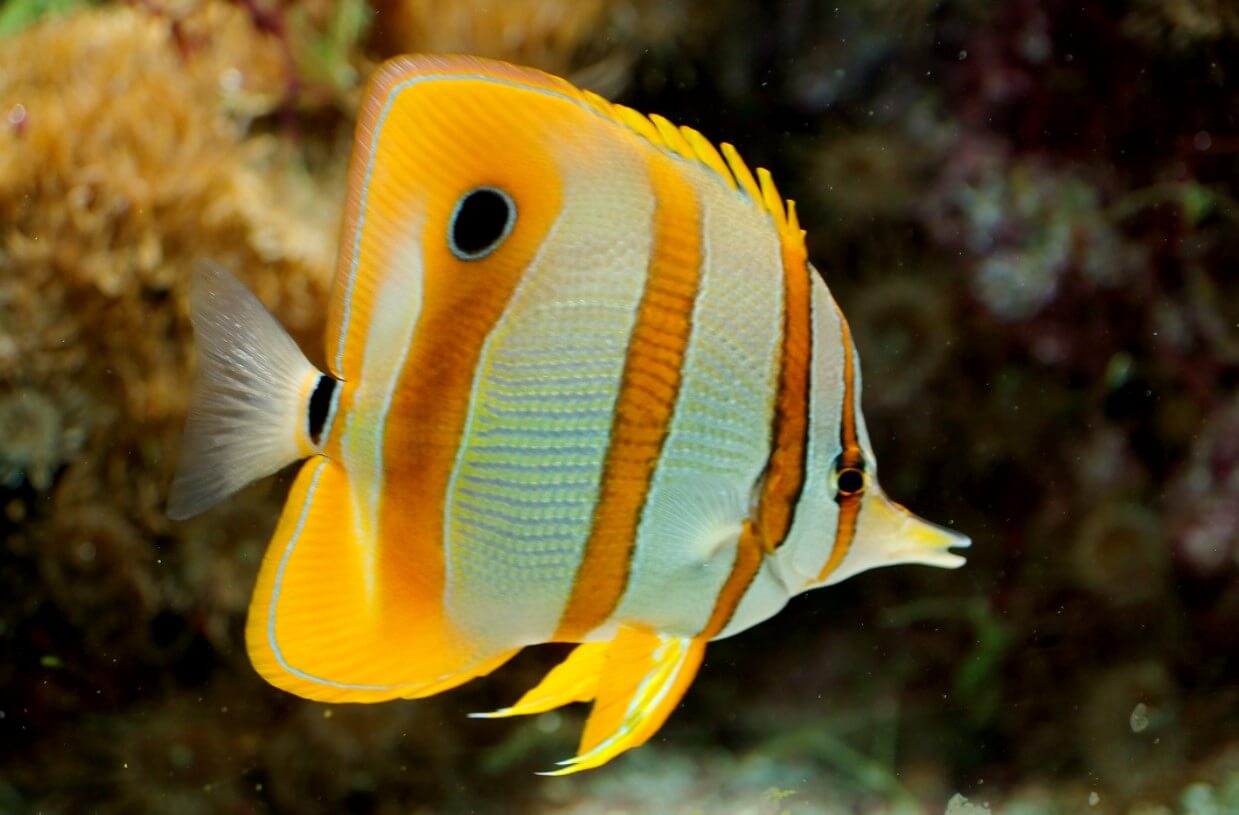
- Family: Chaetodontidae
- Habitat: Indian and Pacific Oceans, Atlantic
- Sizes: 7-30 cm
The family of the brightest and most beautiful sea fish - butterflyfish are the main visiting card of coral reefs and have more than 130 different species. They dwell in coral reefs and rock outcrops of the coastal strip, choosing one site for living for a long time or life. Butterflyfishes are singles that do not form schools or clusters. They lead a daily life, feeding on invertebrates and parasites.
Characteristic features of fish-butterflies are a high, compressed from the sides body, elongated into the tube rostral part of the head, and undivided dorsal fin along the entire body. The basic colors of colors combine black and yellow, black and silver, as well as red, blue, orange spots on a yellow background. Often drawing on fish has similarity with the eye, which helps butterflies hide among colorful reefs, fleeing from predators.
Without fish-butterflies, almost none of the reef aquariums can do, because they are beautiful and conflict-free.
2. Emperor angelfish (Pomacanthus imperator)
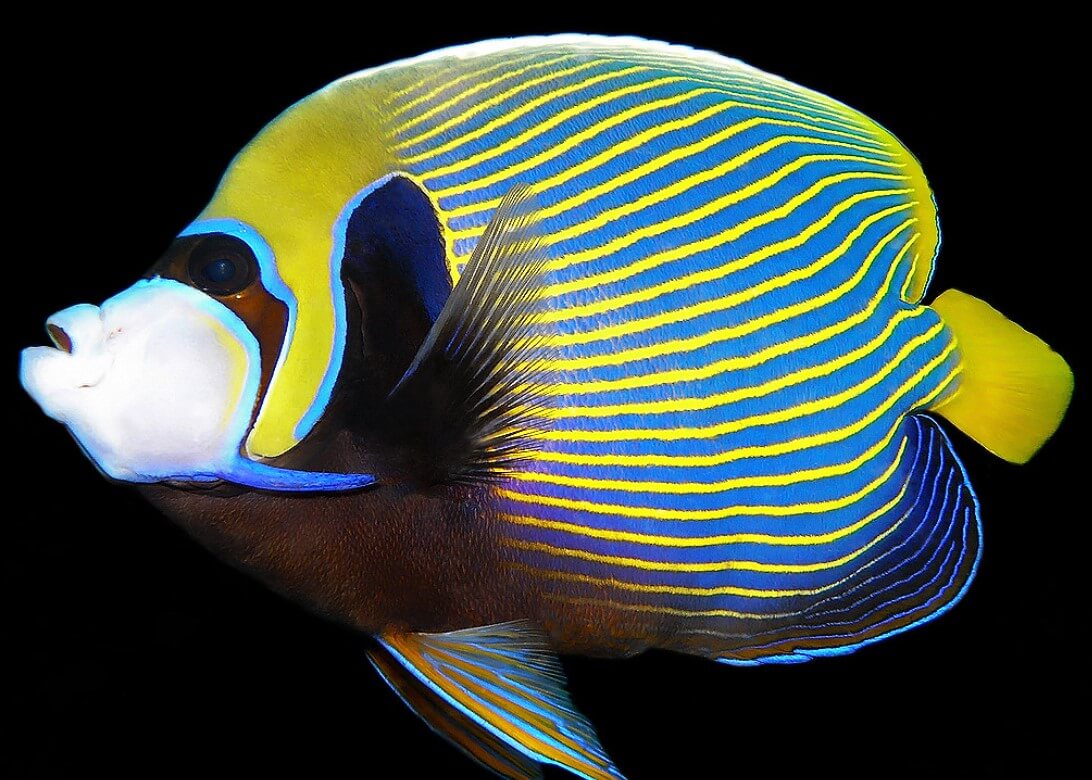
- Family: Pomacanthidae
- Habitat: tropical waters of the Pacific and Indian oceans from the Hawaiian Islands to the Red Sea
- Sizes: up to 40 cm
Of all the representatives of the angelfish family, the imperial angel is the most spectacular. At the same time, it is extremely rare in wildlife. The imperial angel has an oval, elongated, squeezed body with an elongated mouth like a beak. These fish have the ability to change color with age, and crucially: from the dark blue color with white and lilac stripes in youth to a soft blue-green color with golden stripes in adulthood.
Imperial angels are very fond of aquarists. But you should know that these bright fishes are selfish and prone to aggression. If the owner of the imperial angels does not want problems, he should get a large aquarium.
3. Siamese fighting fish, or betta (Betta splendens)
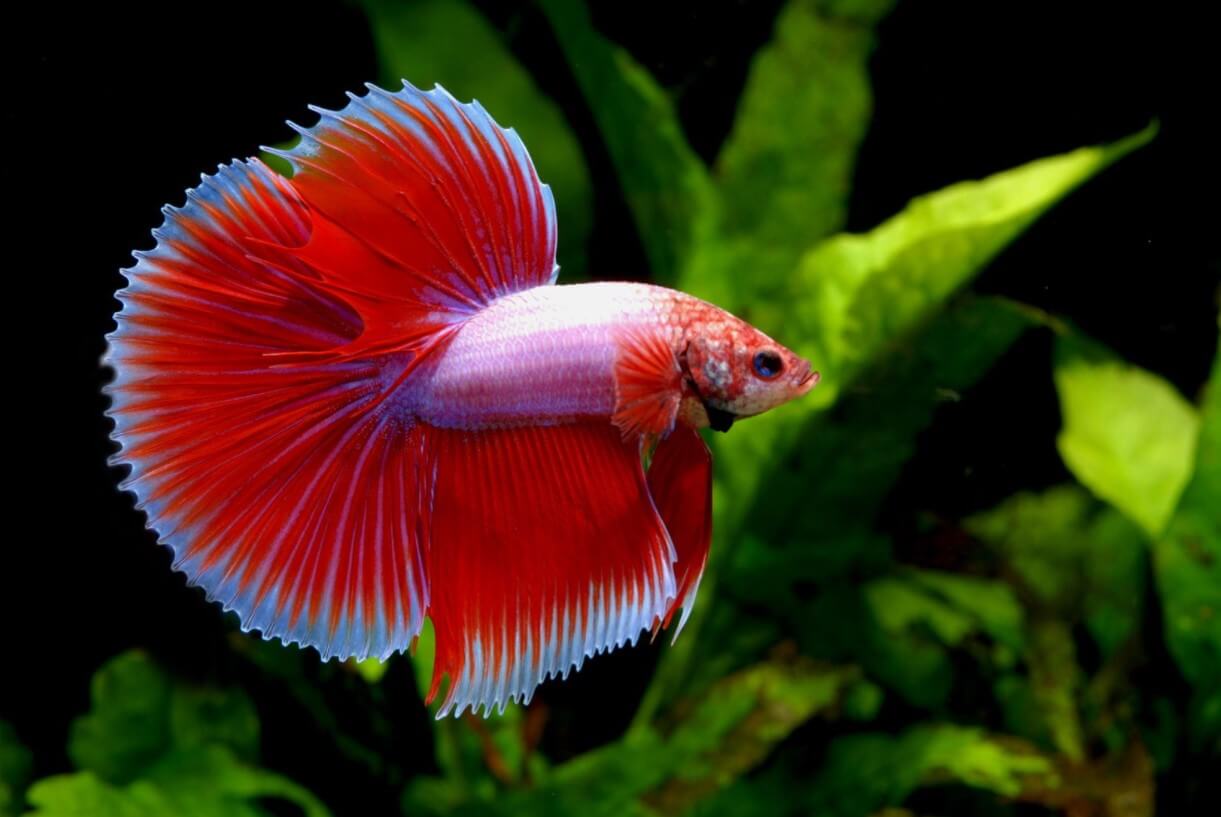
- Family: Osphronemidae
- Habitat: South-East Asia
- Dimensions: 4-6 cm
The most popular aquarium fish in its natural environment is found in the freshwater ditches, rivers, and streams of Southeast Asia. For the first time, these funny fish were seen at the beginning of the XIX century by the inhabitants of Siam, who drew attention to their aggressive nature. Petushki were transferred to the imperial court, where they first studied scientists, and later became used in "fish" battles.
Wild cockerels look less effective, they have shorter fins and olive color. Fighting fish know how to breathe gills and atmospheric air, are unpretentious in care and are suitable for beginners aquarists.
4. The radiant lionfish (Pterois radiata)
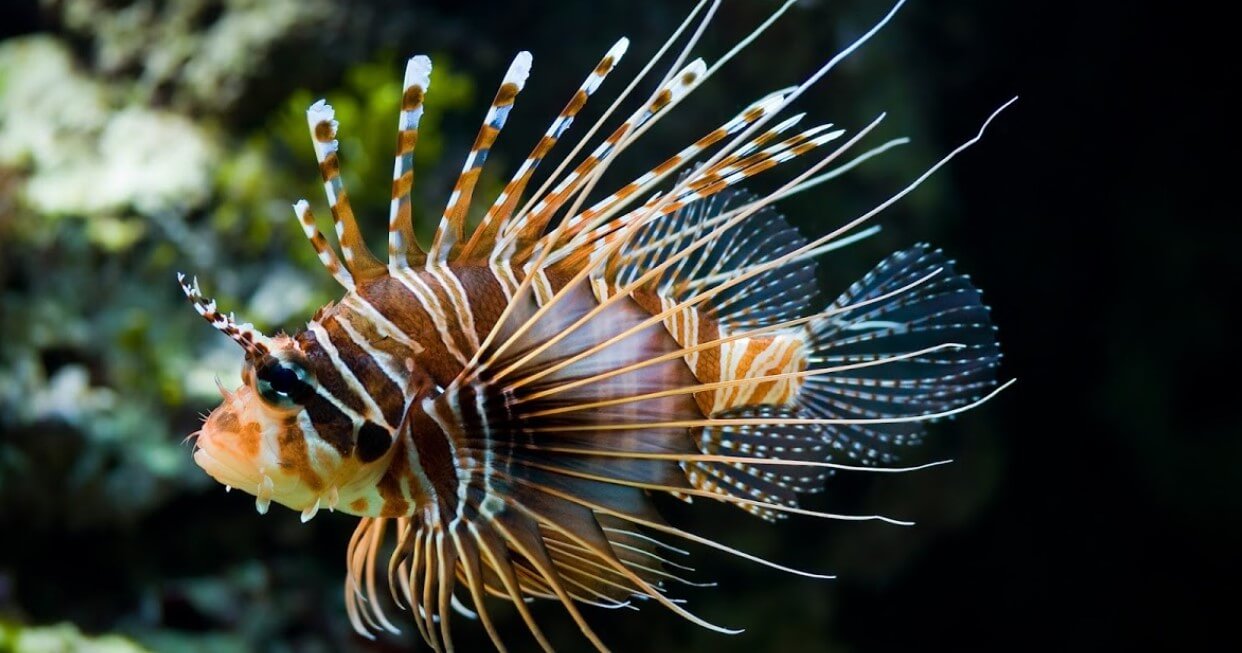
- Family: Scorpaenidae
- Habitat: the waters of the Indian and Pacific Oceans, the Red Sea, and the Arabian Sea
- Sizes: up to 24 cm
The bright coloring of the radiant lionfish is a warning signal for its enemies because the injection of this fish is very unpleasant. The winged fin has a pronounced dorsal fin, consisting of 12-13 hard poisonous rays. The poison is similar in composition to cobra toxins but is contained in a lower concentration. The fins connected by membranes give a special beauty to the radiant wings. Due to this, the floating lion turns into a semblance of a clot of flame.
A beautiful lionfish can be found in shallow lagoons and on reef shoals. The lioness leads a nocturnal life. It feeds on the predatory beauty of shrimps and crabs, occasionally it can encroach on small fish.
5. Clownfish (Amphiprion)
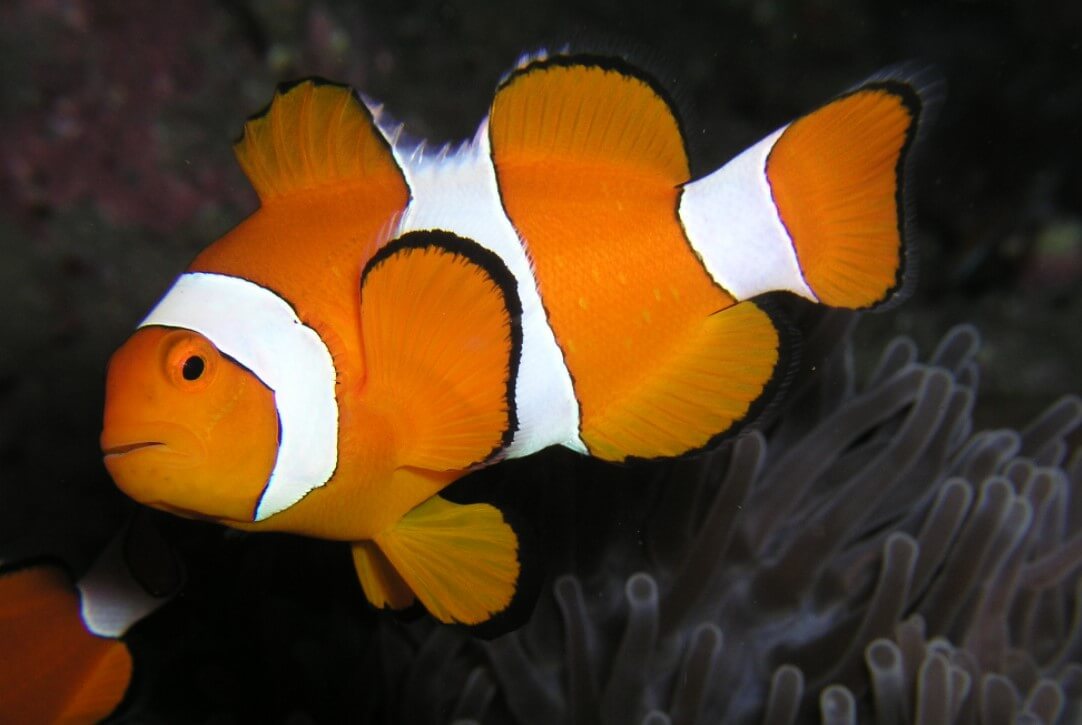
- Family: Pomacentridae
- Habitat: Indian and Pacific Oceans
- sizes: up to 8 cm
Another illustration to the cartoon "In Search of Nemo" and the prototype of one of the main characters - a clownfish. The fish of this species are very attractive colors of orange, black, white, and other colors. They are friendly, undemanding, and perfectly suited for keeping in captivity.
A small fish with the original color in its natural habitat has become accustomed to living in close connection with such marine organisms as the sea anemones. A clownfish is not afraid of the toxins of this invertebrate and forms a symbiotic pair with it.
Fish helps the sea anemone to breathe, and the poisonous tentacles of the actinia serve as reliable protection for a brightly colored and poorly floating clownfish. To keep a clown in an aquarium is possible without an actinia, but this violates natural partnership.
6. Banggai cardinalfish (Pterapogon kauderni)
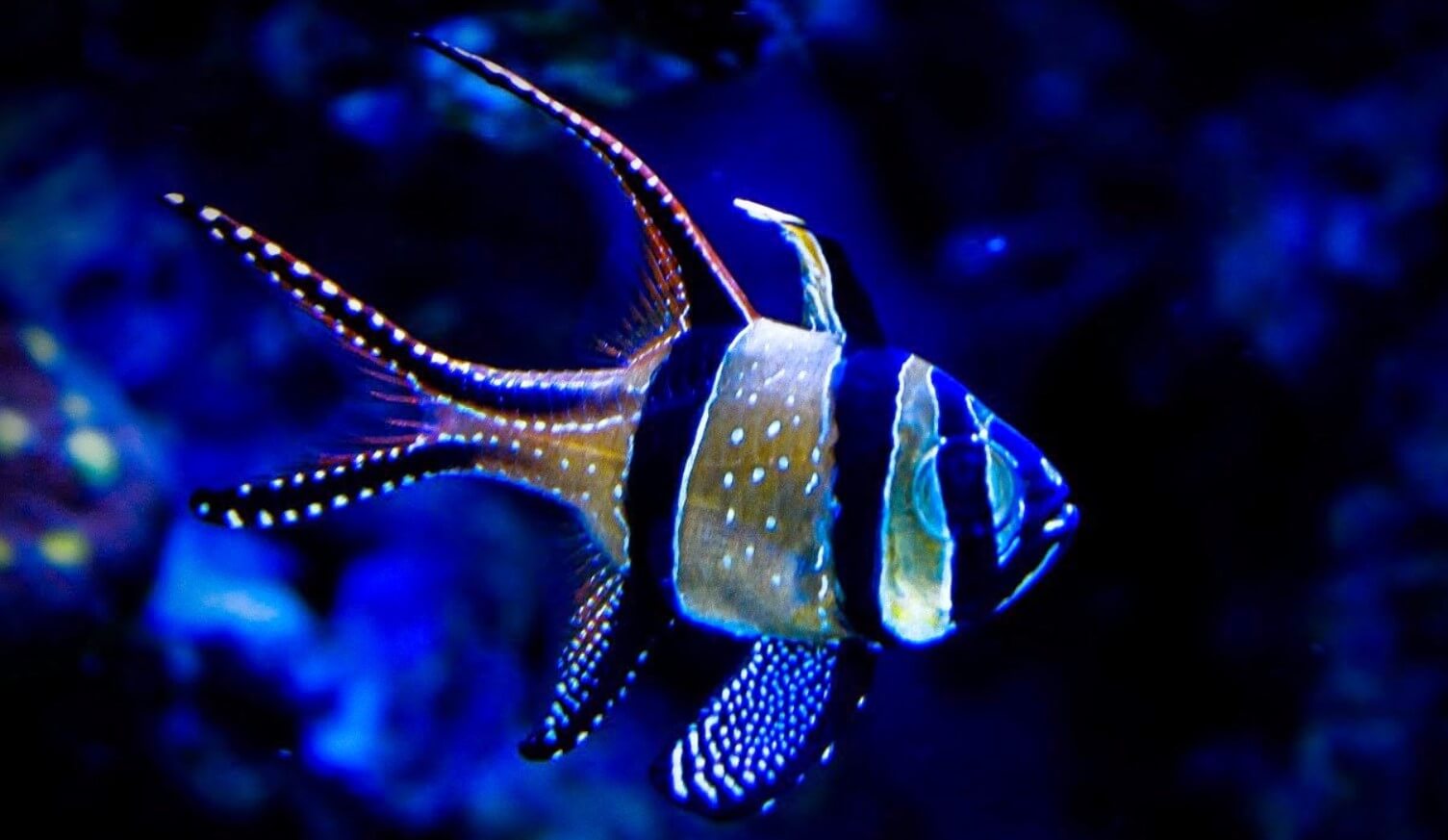
- Family: Apogonidae
- Habitat: coastal waters of Bangai Island
- Dimensions: 5-8 cm
The Banggai cardinalfish, which can also be known as name "Pterapogon kauderni", lives exclusively near the shores of Bangai Island. The fish is the owner of the silvery body with small white spots, crossed vertically by strips of black color. White spots are more clearly visible on the fins of the Banggai cardinalfish and give it a particularly picturesque appearance reminiscent of a bird or butterfly.
Banggai cardinalfish often live in flocks, but with age, males begin to gravitate towards territoriality. In this regard, aquarists are recommended to keep Banggai cardinalfish in large aquariums with an abundance of stones and one by one. Peaceful neighbors, they do not touch, polyps do not eat, but small shrimps burst with "hurray."
7. Seahorse (Hippocampus)
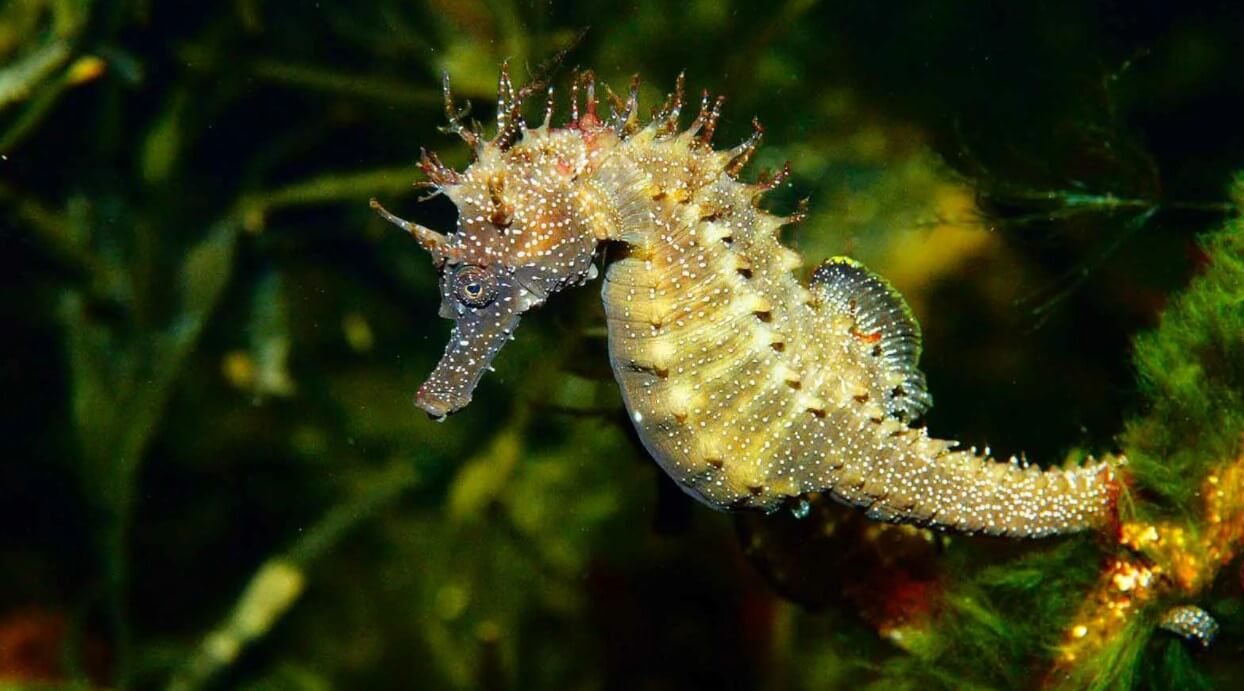
- Family: Syngnathidae
- Habitat: Tropical and subtropical seas
- Sizes: 2-30 cm
A seahorse is a fish with the most interesting form of the body from the now existing ones. Although there are more than 50 types of skates in the world, only 32 of them have been able to study the anthropologists so far. The appearance of these unique creatures has the property of completely adapting to their habitat. For this, the seahorse takes only a few minutes.
The body of the seahorse is decorated with multiple spikes of different sizes and ribbon-like leathery outgrowths. Eyeballs of fish can move independently from each other, increasing viewing angles.
Live seahorses prefer in shallow waters, marshy or sandy water surroundings. They lead a solitary sedentary lifestyle, cling to the tail of algae and corals, and catch plankton passing by. Mysteries of this type of fish attached back allocation of roles between the male and female in the derivation of offspring.
8. Royal blue tang (Paracanthurus)
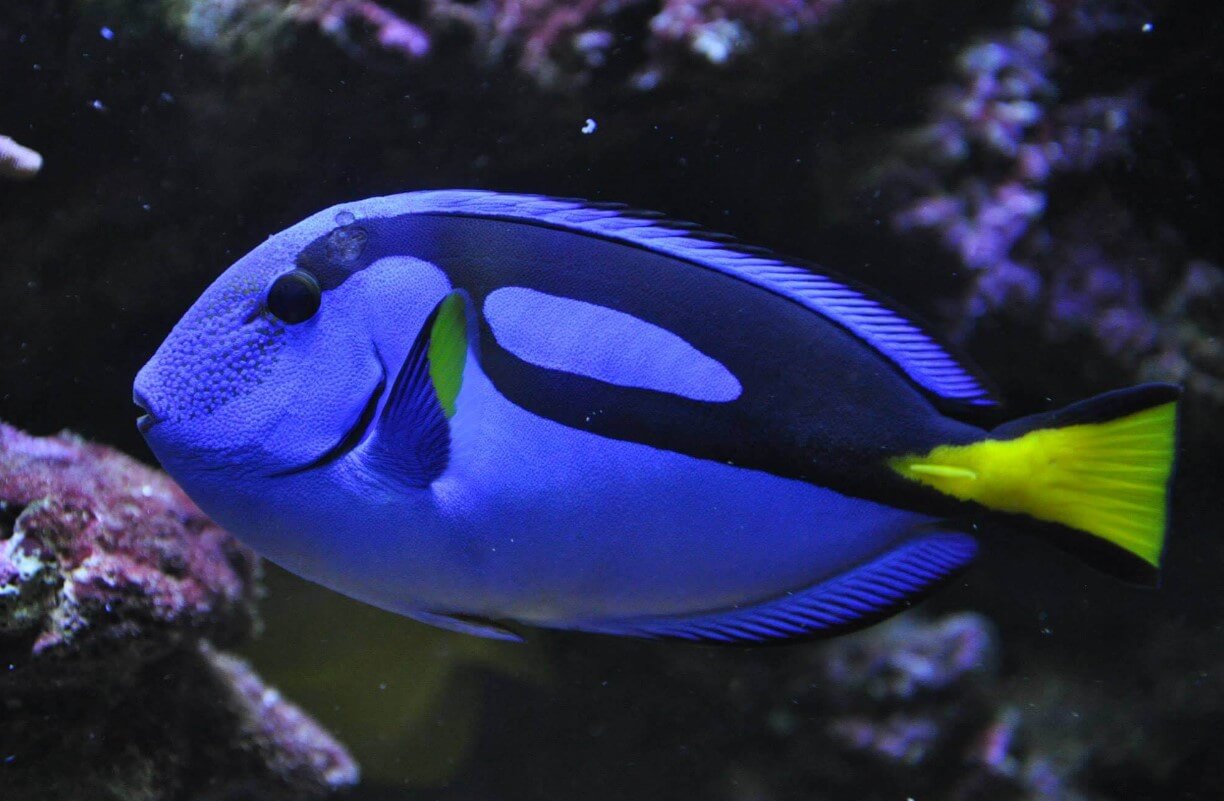
- Family: Acanthuridae
- Habitat: Indo-Pacific
- Sizes: 15-30 cm
One of the rarest species of the marine aquarium - a blue royal surgeon - has become extremely popular after the release of the cartoon "In Search of Nemo." These fish have a laterally compressed body, long fins, and a head that falls perpendicularly. The blue color with black twists on the body, as well as the bright yellow accent of the fin gives the royal surgeon a stunning appearance.
Royal blue surgeons perfectly coexist with aquarium fish of any kind, but not with their relatives. Simply these fish are loners, and they create harem flocks exclusively for the period of mating. Royal surgeons have sharp, scalelike spines that can slide out and retract. If there is more than one fish in the aquarium, the thorns turn into an effective weapon in disputes over the territory.
9. Tetraodon
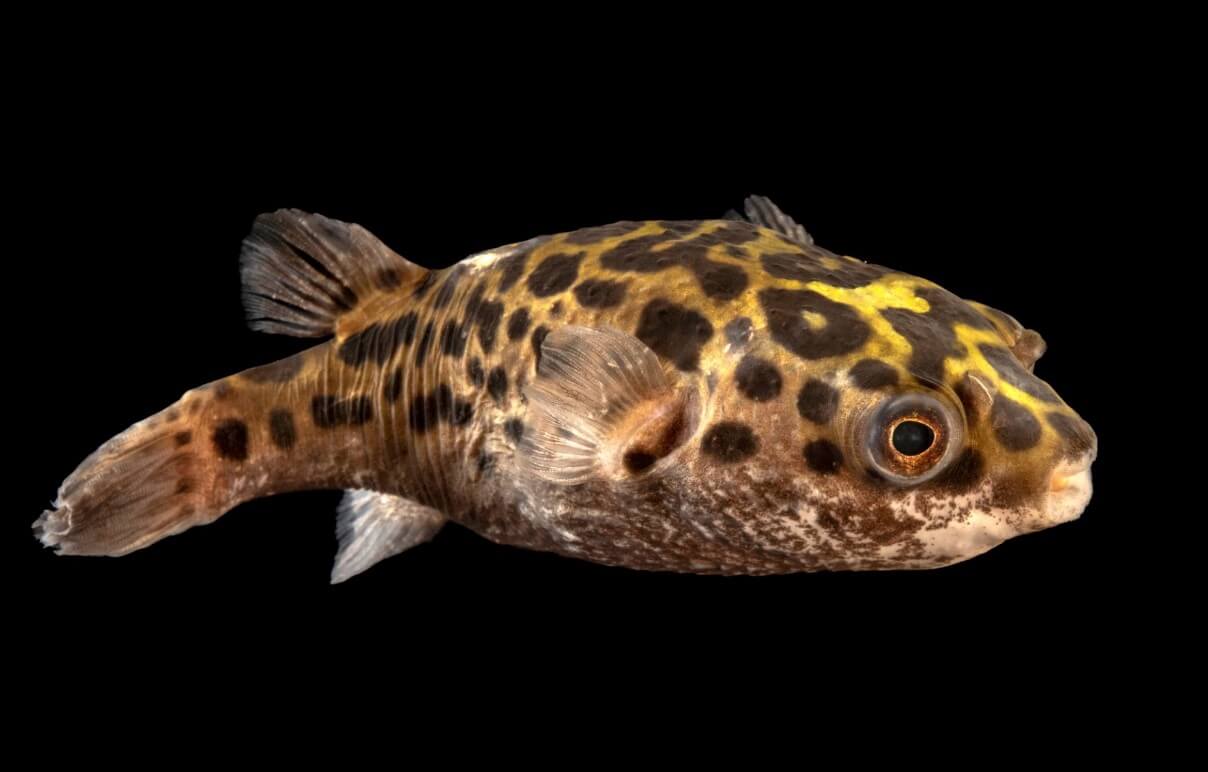
- Family: Tetraodontidae
- Habitats: Africa, South, and South-East Asia
- Dimensions: 5-67 cm
Tetraodon is one of the most spectacular, but the most controversial and unpredictable inhabitants of freshwater ponds and aquariums. Tetraodon are the owners of smooth skin, rounded forms, damp pupils, and trustful gaze. They are nice and funny. And they are also poisonous and dangerous and are relatives of fugu fish.
Tetra-ions have never been of interest to breeders, so they preserved the naturalness of the species. They are distinguished by their color, size, and degree of aggression. The color range of color varies from olive green to brown, and distinguish tetraodones by a unique pattern.
Fish have only 4 teeth, but they are quite enough to crush shell shells. The main "feature" of tetraodines is the ability of their pear-shaped body to swell up to the state of the ball and bring the spikes that replace the scales into a vertical state.
10. Reef triggerfish (Rhinecanthus rectangulus)
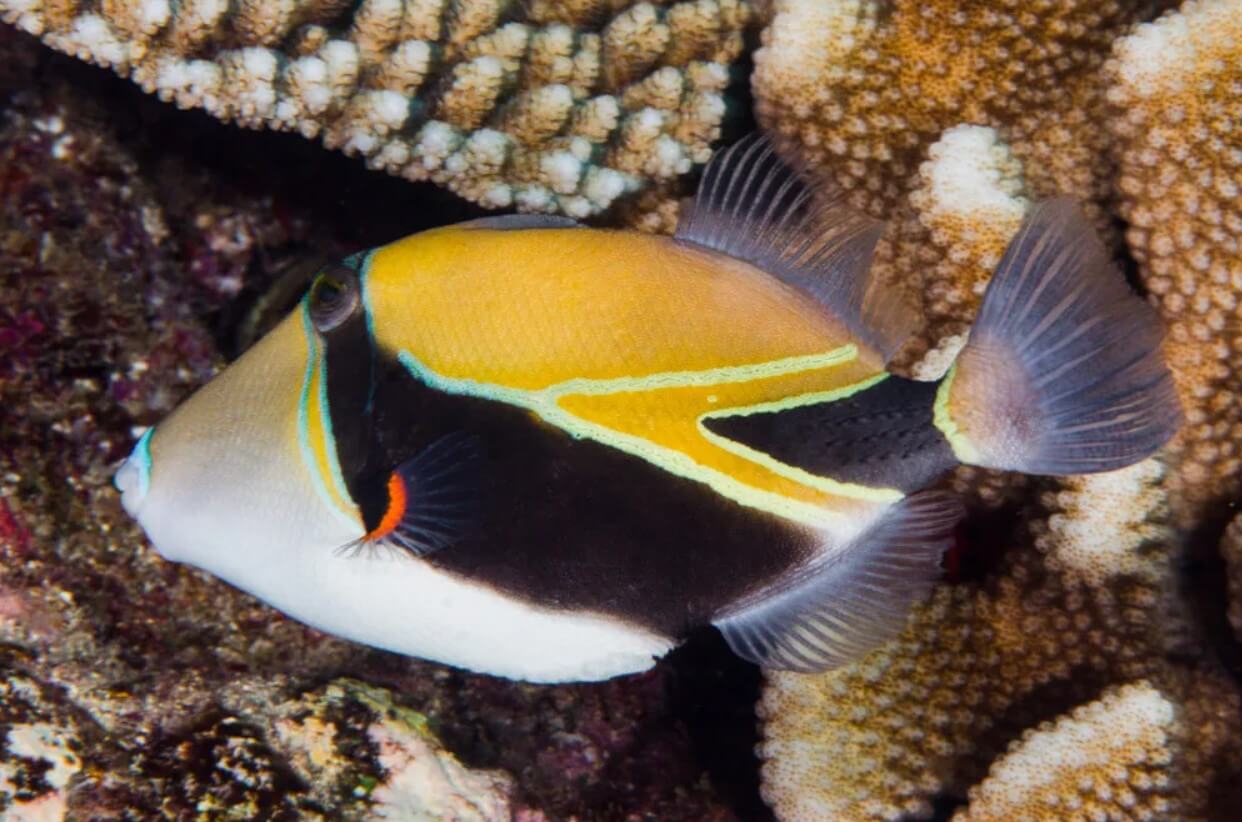
- Family: Balistidae
- Habitat: India and the Pacific
- Sizes: up to 30 cm
Reef triggerfish is a very powerful fish that looks like an oval. The color of these fish has several options, but all of them are extraordinarily beautiful. In most cases, the head, back, and middle of the abdomen are white, with a black band widening at the base of the fin. The eyes of Reef triggerfish are very specific because they are very high, almost in the middle of the body of the fish, and can rotate independently of each other.
In fish with an unusual appearance, the character is also quite complicated. When the sudden fits of rage come to replace the calm, the fish "fell under the hot fin" and the fragile details of the aquarium environment.
11. Regal angelfish (Royal angelfish)
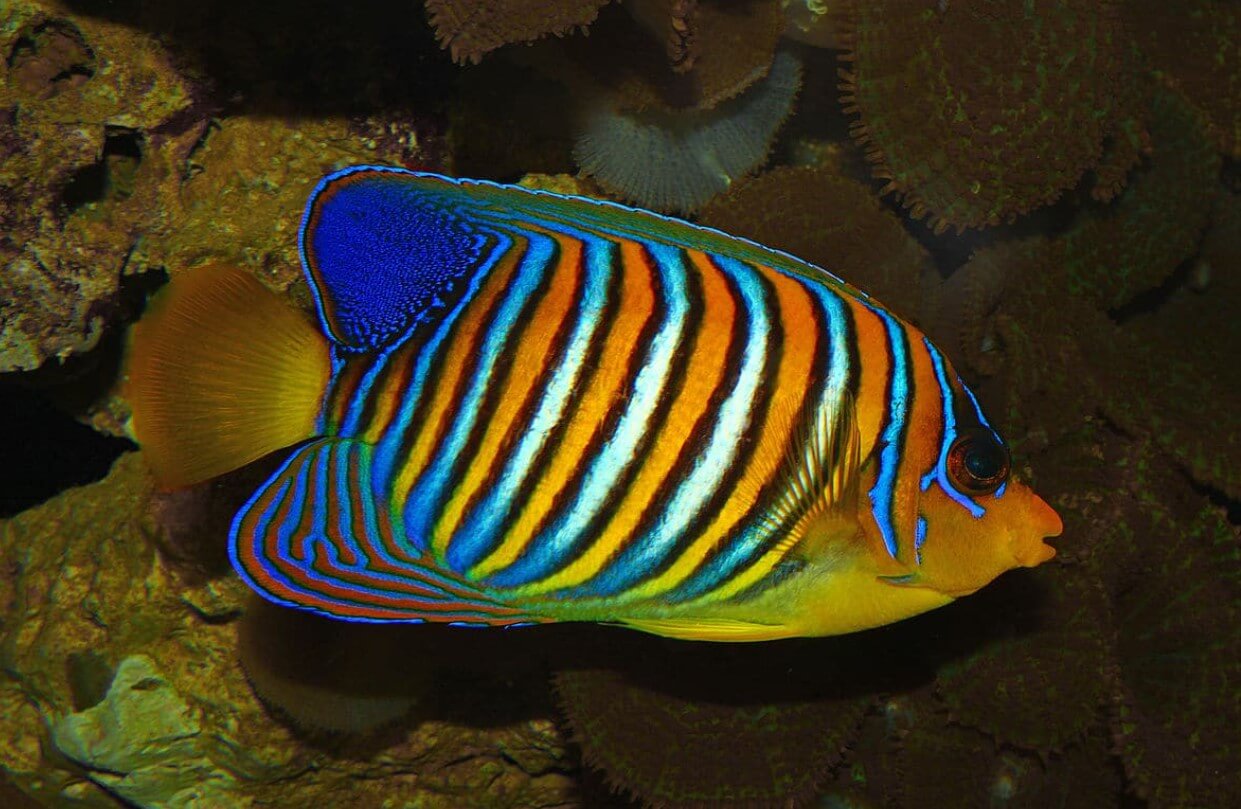
- Family: Pomacanthidae
- Habitat: the territory of the Red Sea, Indo-Pacific, and Tahiti
- Dimensions: 10-25 cm
The body of the royal angelfish has wide vertical blue and white stripes with dark edges. These fish also have a very beautiful dark bluefin with multiple blue patches.
The regal angelfish, like most of the brethren by sight, has chosen areas with abundant coral vegetation and multiple shelters. Royal angelfish prefers to live alone, but sometimes it can take a pair.
The fish feeds with ascidians and sponges and can live up to 15 years. Due to the non-aggressive nature of the Royal Angelfish, it perfectly fits with the majority of the aquarium inhabitants, but it requires a lot of space and places for solitude.
12. Mandarinfish (Synchiropus splendidus)
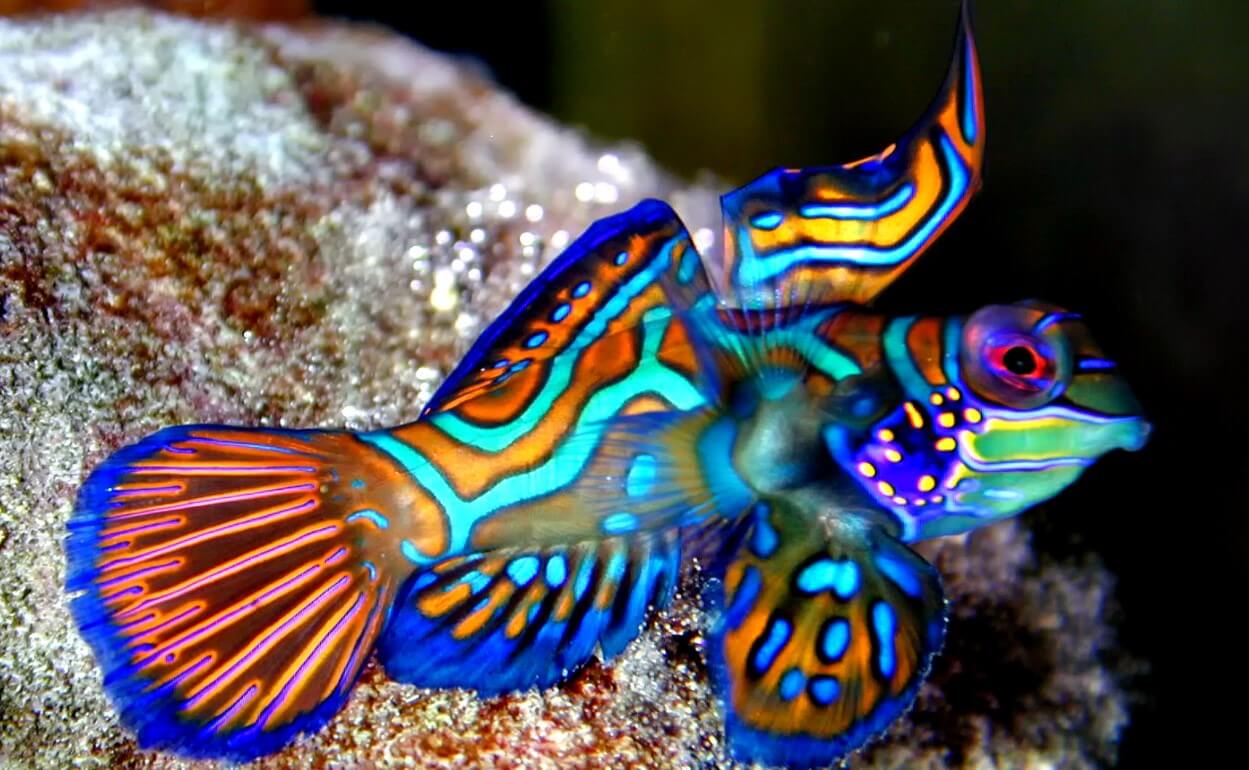
- Family: Callionymidae
- Habitat: western part of the Pacific Ocean
- Dimensions: 5-8 cm
Extraordinarily bright coloring, mysterious patterns on the sides and fins, as well as natural slowness and imposingness gave this little fish a resemblance to the Chinese grandees and the name Mandarin. These miniature and, undoubtedly, beautiful fish are a welcome acquisition of any aquarist, but cares for them in captivity is quite difficult and troublesome.
The natural habitat of Mandarin is coastal reefs, muddy or sandy marine soil. Their favorite delicacy is amphipods and gastropods, but, in principle, they are suitable for any small representatives of crustaceans, invertebrates, and fish caviar.
13. Goldfish (Carassius auratus)
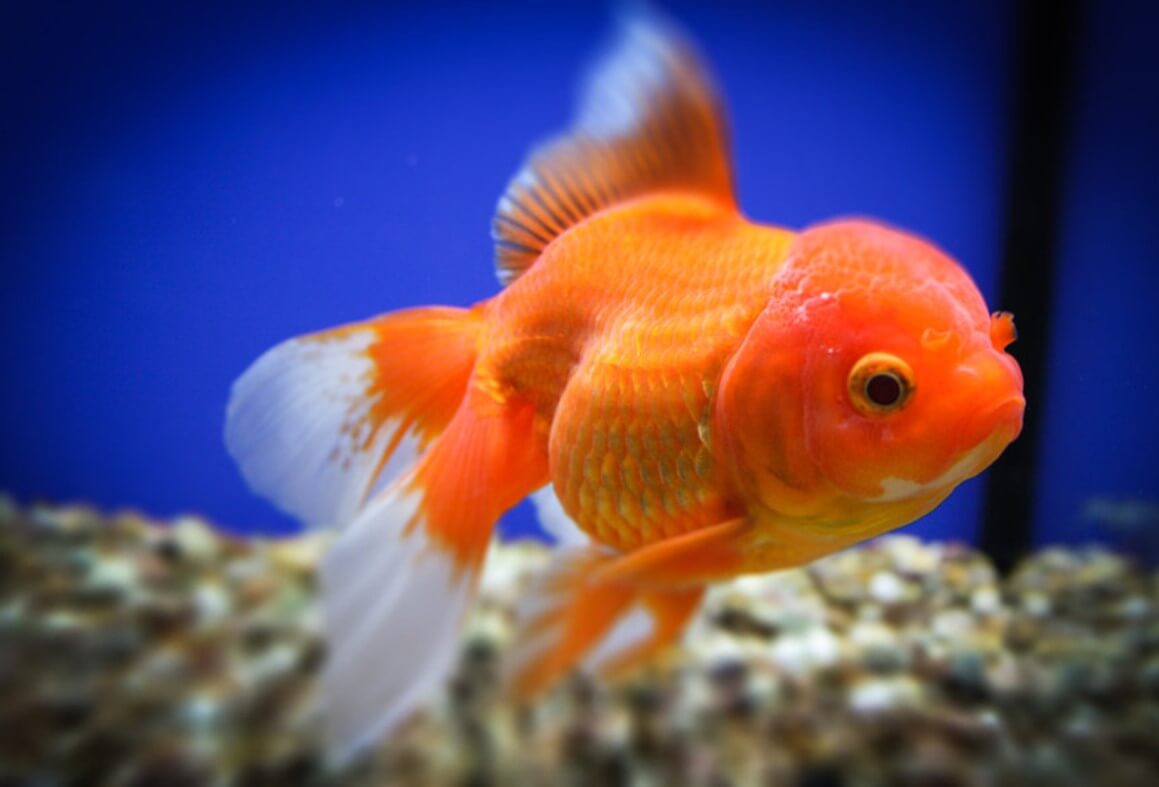
- Family: Cyprinidae
- Habitat: Japanese islands, bred by breeding
- Sizes: up to 20 cm
Lionhead is one of the so-called "Golden Fish". It has a short rounded trunk, there is no dorsal fin, and in the area of the gill covers, there are built-ups of denser skin, resembling raspberries or the mane of a lion. The sprouts sometimes reach large volumes, covering the fish with small eyes. The most common colors of lion heads are golden, snow-white, and orange-red.
Lionheads are undemanding in care, friendly, and perfectly get along with neighbors on the aquarium. Eat all but tend to overeat, so the sole task of their owner is not to overfeed a beautiful pet.
14. Lemonpeel Angelfish (Centropyge flavissima)
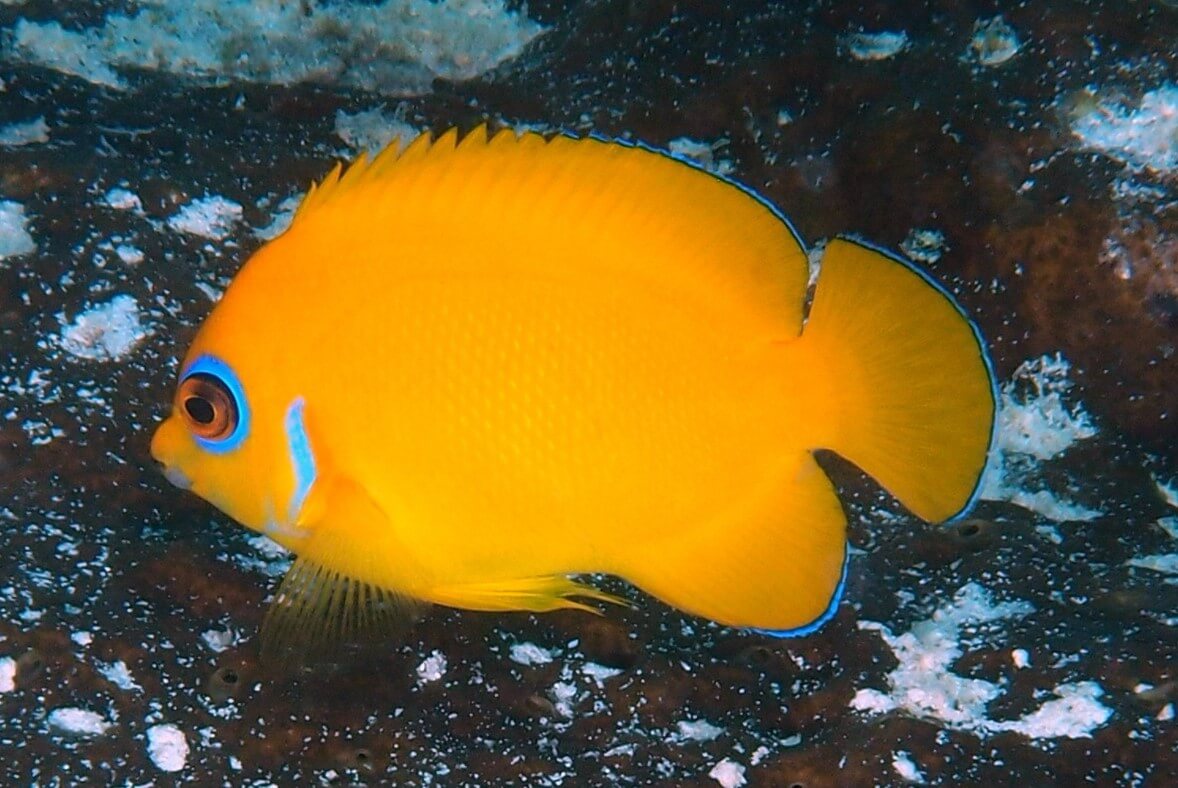
- Family: Pomacanthidae
- Habitat: southern, western, and central parts of the Pacific Ocean
- Sizes: 7-10 cm
The beautiful and unusually bright coloring of a small fish of the centrepin of the royal or fiery can revive both the seabed and the home aquarium. In the natural habitat, the fish prefers to live on the outer parts of the reef and in lagoons with clear water.
Lemonpeel angelfish differs secrecy and caution, so most of the time the fish spend near the shelter. The diet of the centropyge consists of algae and crustaceans. In a natural environment, this species of fish is kept by small harem groups of 3-7 fishes, therefore it is not recommended to keep several males in the aquarium, as they are aggressive towards each other.
The color of the centropyge is dominated by rich red and black colors, on the sides - dark vertical bands and the fins of adults are decorated with a bright blue border and longitudinal blue strokes.
15. Six-line wrasse (Pseudocheilinus hexataenia)
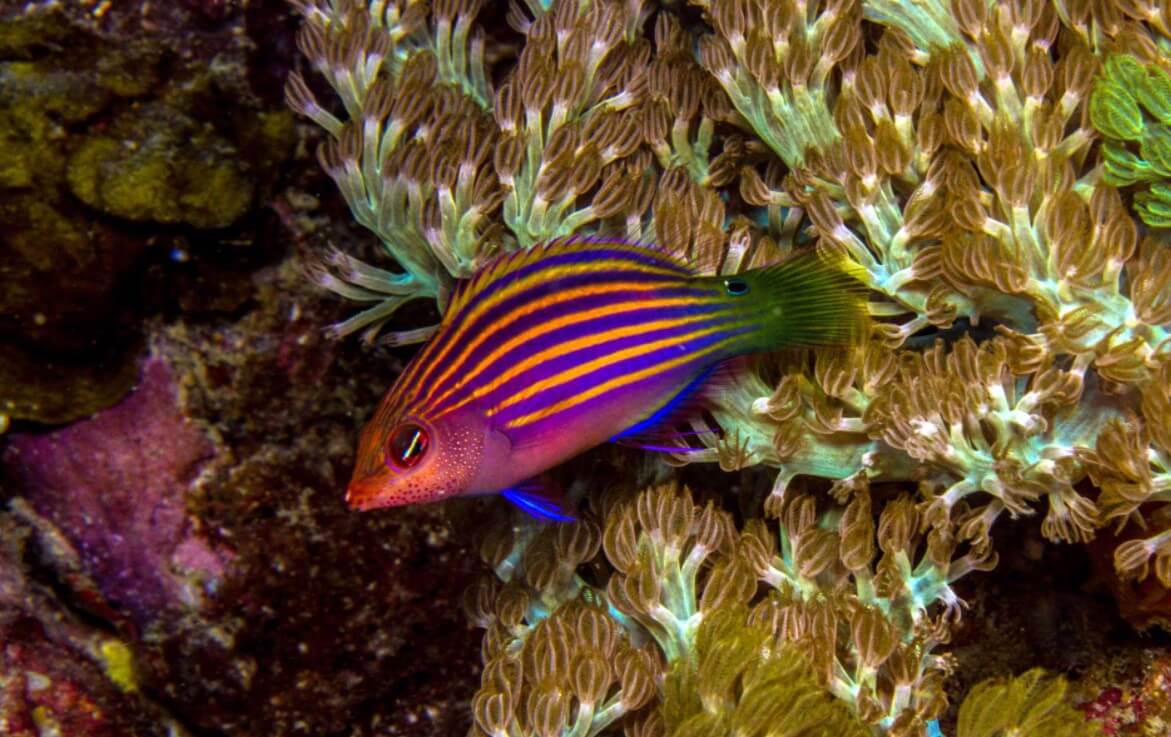
- Family: Labridae
- Habitat: the Great Barrier Reef, the Red Sea, the tropical waters of the Indo-Pacific
- Dimensions: 4-8 cm
Six-line wrasse or Pseudocheilinus hexataenia has an original color with longitudinal stripes of blue and orange colors. Such a "combat coloring" should warn potential competitors that the site is busy. After all, the six-banded lip is single and very territorial.
Six-line wrasse leads exclusively day life, and at night buries into the sand among the crevices. These fish not only look great in aquariums but also bring considerable benefit by destroying parasitic mollusks and planaria. Six-line wrasse loves a quiet environment and secret places, so aquariums for them set living stones.
16. Bicolor Angelfish (Centropyge bicolor)

- Family: Pomacanthidae
- Habitat: from the east coast of Africa to Samoa, the south of Japan, and New Caledonia
- Sizes: 6-15 cm
Bicolor angelfish is distinguished by its large size and characteristic contrasting color. The border of the transition of the stripes in the color of the fish is pronounced, and sometimes even underlined by white.
The Bicolor angelfish lives in clearwater at a depth of 10-25 m, hiding from the dangers of coral reefs and biotopes. Young fish are kept alone, adults - in pairs or small groups.
17. Fire eel (Mastacembelus erythrotaenia)
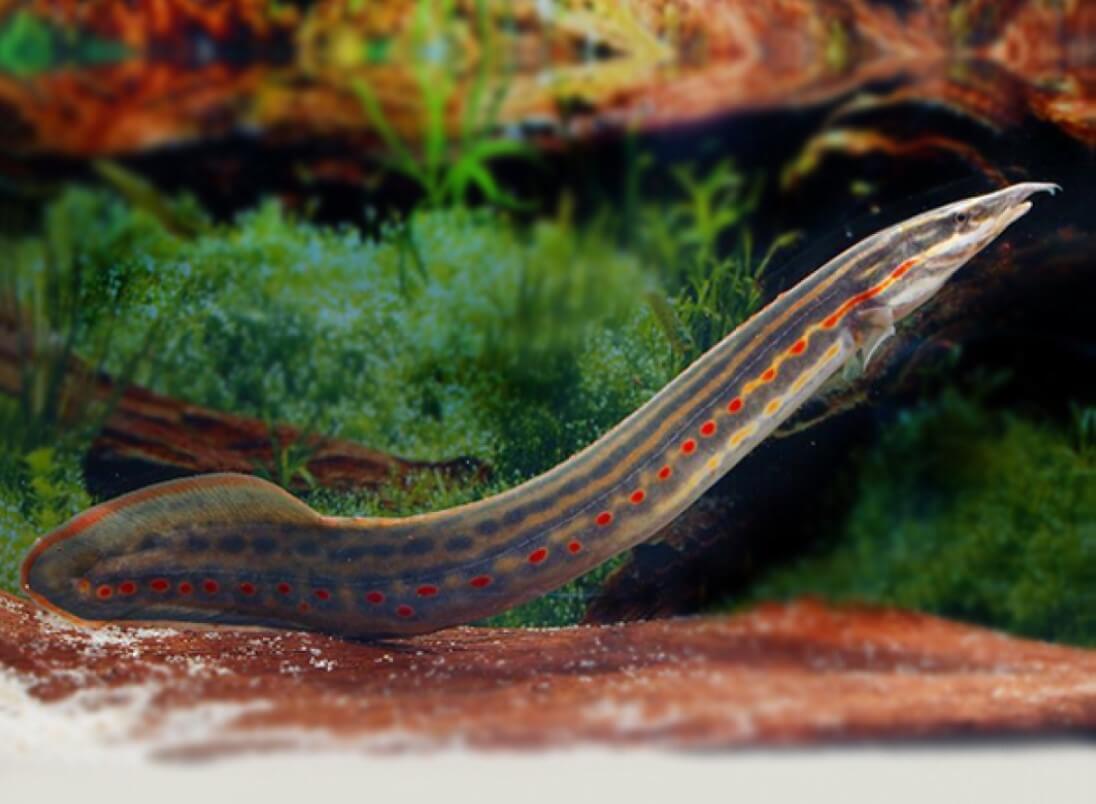
- Family: Mastacembelidae
- Habitat: Thailand, Burma, and Malaysia
- Dimensions: length from 0.5 to 1 m, height 6-8 cm
Fire eel is a predatory bottom fish that inhabits slowly flowing rivers and lakes with a sandy or silted bottom, densely overgrown seaweed. The fish has a long body covered with small scales, large eyes, and a pointed mobile proboscis on the snout. Fire eel has a dark brown color with four fiery red or orange stripes.
This fish has gained notoriety, both among fishermen, and in the circles of inexperienced aquarists. On the dorsal fin of the Fire eel, there are thorn spines, with which the sharp fish strives to scratch anyone who tries to take it in hands. The thorns themselves are not toxic, but the mucus is covering them.
18. Moorish idol (Zanclus cornutus)
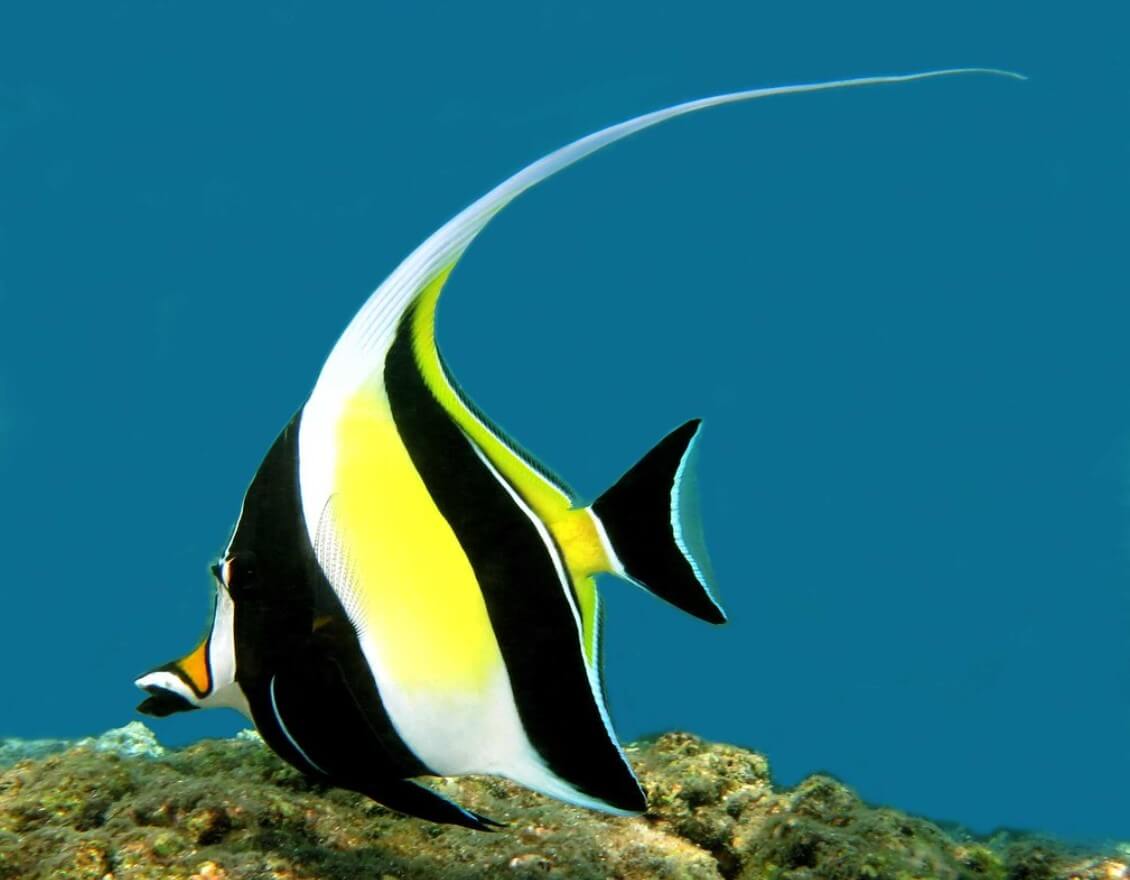
- Family: Zanclidae
- Habitats: Melanesia, Polynesia, Micronesia, Japan, eastern India
- Dimensions: 22-25 cm
The Moorish idol is a common inhabitant of coral reefs. In ancient times it was considered to bring happiness and was sacred to the Arabs. But the days have passed when an Arab fisherman released such a fish at will, giving it a bow in parting. Now the aquarists call the Moorish idol and keep it at home, although the fish is rather whimsical in feeding.
Externally, the Moorish idol is similar to a glial, has a flat discoid body, and developed a dorsal fin with a long filiform outgrowth of several rays and thorns. Another distinctive feature of the fish is a long snout resembling a bird's beak. The bright color of the idol, consisting of alternating black and white-yellow strips, make it an unforgettable decoration of the water depths.
19. Parrotfish (Latin Scaridae)
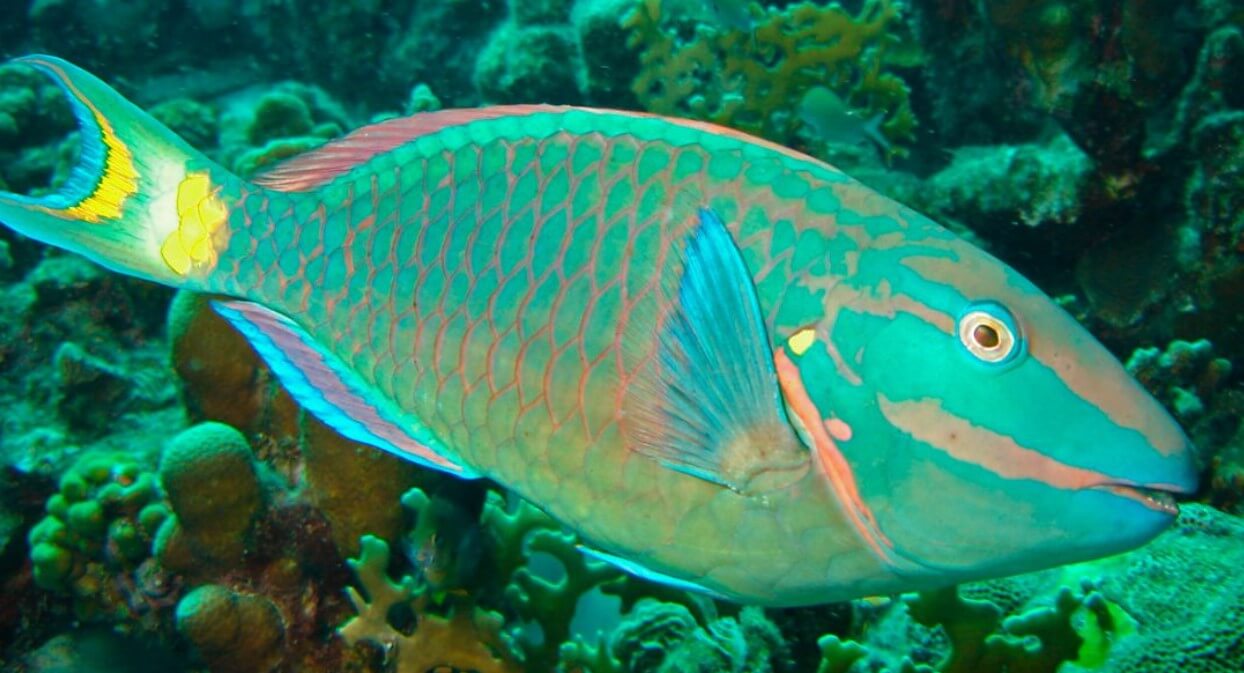
- Family: Scaridae
- Habitat: Indian and Pacific Oceans, Atlantic
- Dimensions: 19 sm -1,2 m
Among all the inhabitants of the water depths, the parrotfish is the most noticeable due to its large size and bright colors - blue, green, yellow, red, brown, and orange. Fish can have different combinations of different colored spots and stripes. The colors and their intensity largely depend on the sex and age of the fish.
The males have a powerful hunchback on the forehead. Parrotfish are singles and hermaphrodites, constantly changing sex. They are territorial creatures, and with the onset of the night and completely hide in a protective cocoon of mucus.
Also, parrots have a special structure of teeth, which gives their jaws a resemblance to the beak of the same bird. When this fish "eats", underwater there is a loud crunch from cutting and chewing alive corals, the friction of teeth on stones. In the stomach of fish, corals, skeletons of mollusks, and algae are processed into the white coral sand, with which the parrotfish generously sprinkle the bottom (up to 100 kg per year).
20. Ornate angelfish (Genicanthus Bellus)
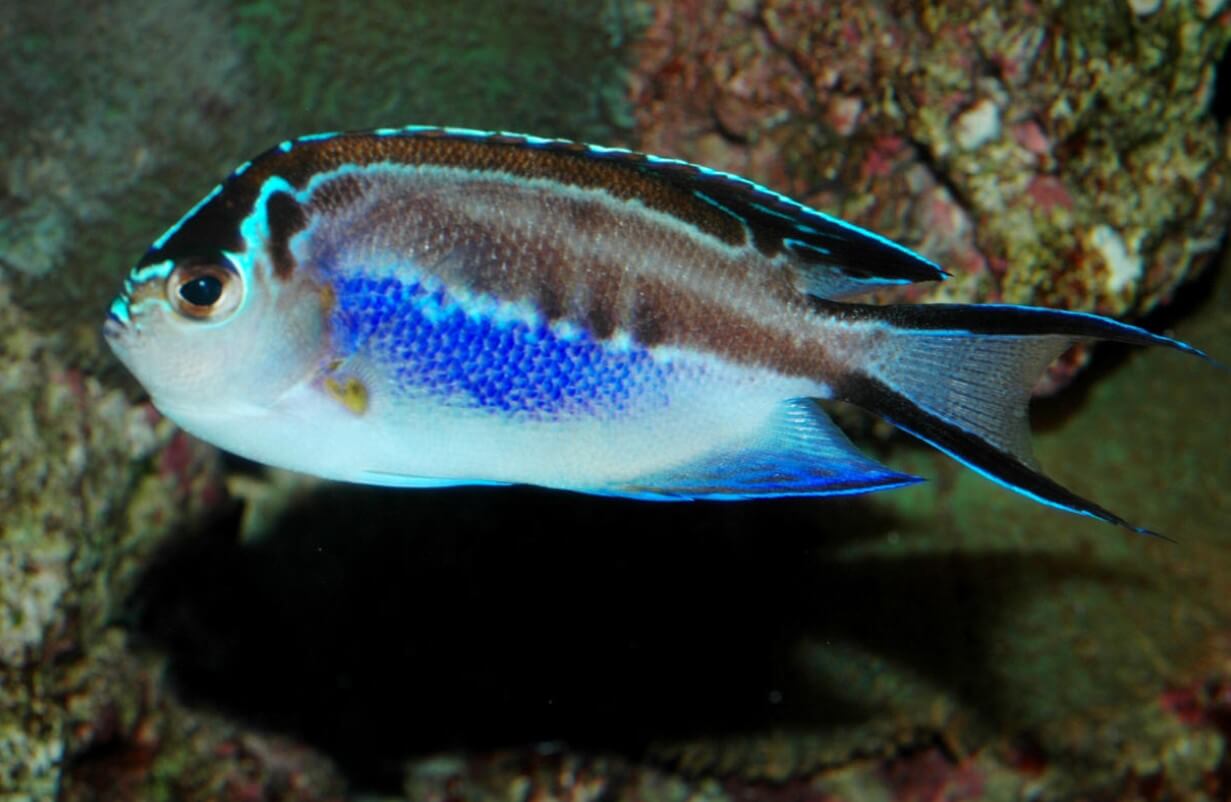
- Family: Pomacanthidae
- Habitat: the waters of the Indo-Pacific region, Philippines, Palau
- Dimensions: 15-18 cm
A distinctive feature of the fish is an elongated body with a lily-shaped tail. The red-tailed angel on the sides and blades of the caudal fin has beautiful dark streaks, as well as a black or dark brown mask on the eyes. In young fishes and females, the colors are more vivid and contrasting. Ornate angelfish also distinguishes the presence of orange bands.
In nature, the Ornate angelfish meets near the outer slopes of coral reefs, feeds on plankton, and gathers in harem groups of 3-7 fish. For conflict-free content in the aquarium, one male leader of the lyre-tails "family" should be kept.





